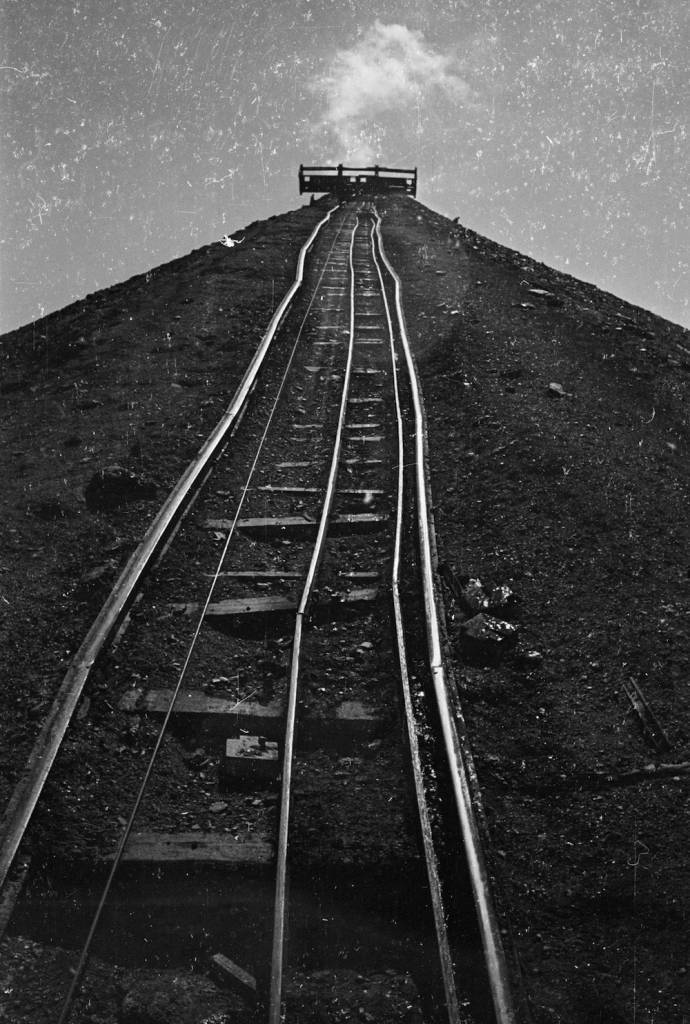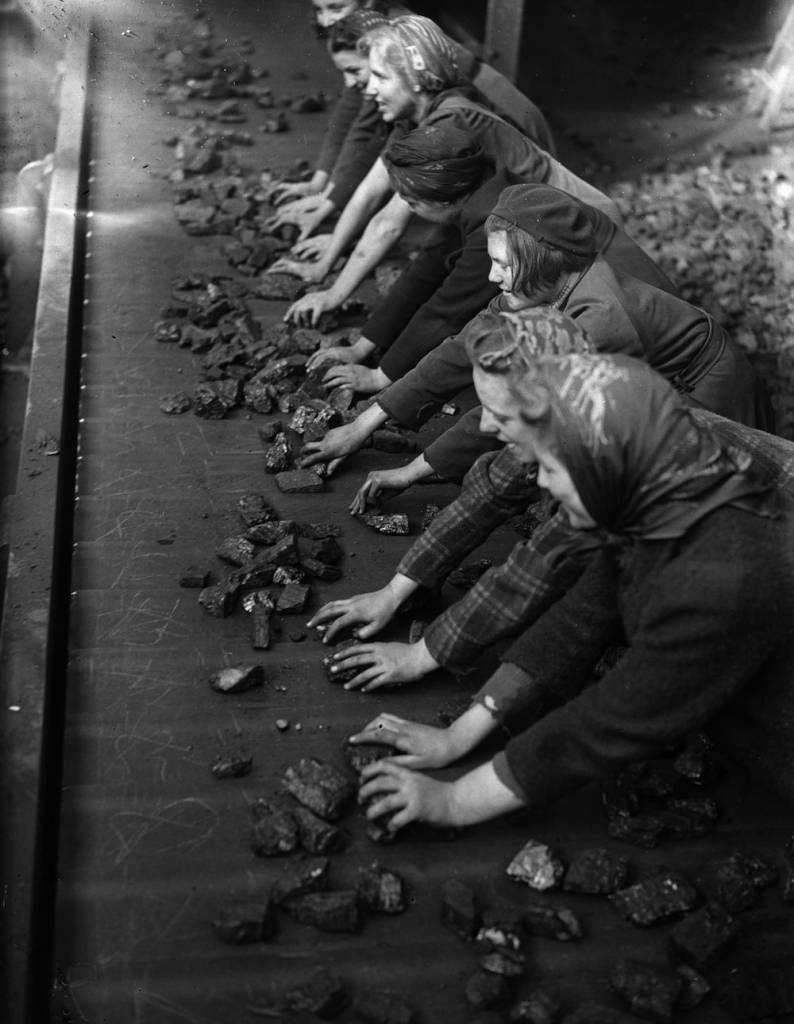
1930: Using his newly developed Sashalight, photographer Sasha has taken this picture of coal miners in the emergency cage. The Sashalight is a new type of flash which is ignited by an ordinary battery, and so is safe to use in a mine, unlike previous flashes which used highly explosive flash powder. (Photo by Sasha/Getty Images)
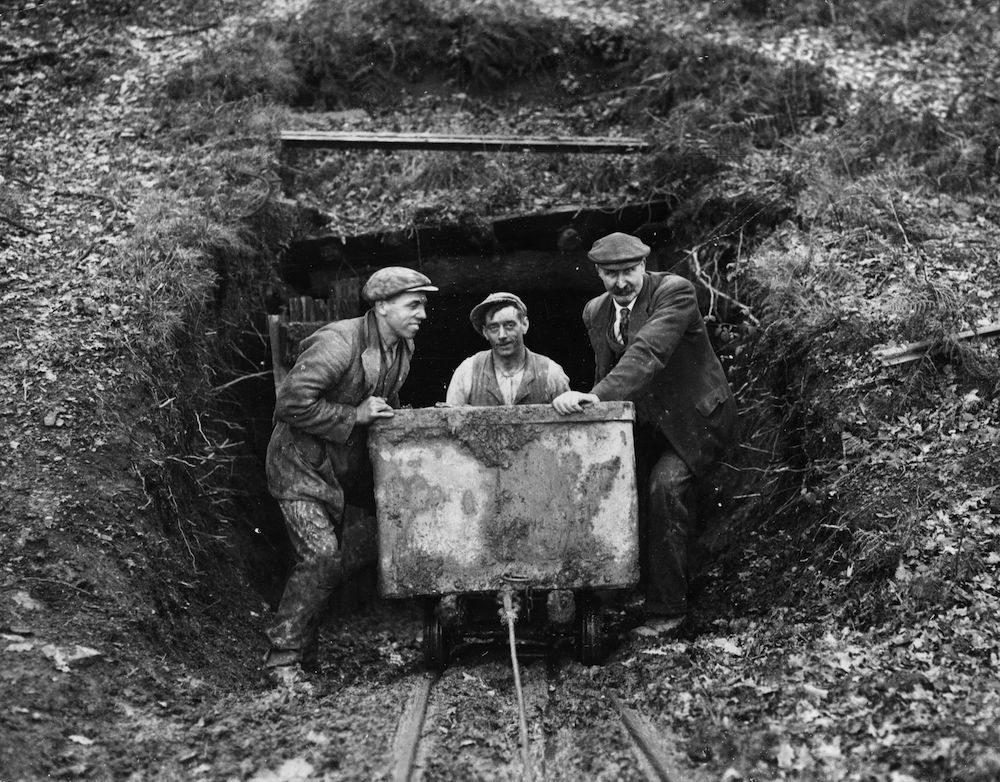
circa 1930: Miners bring out coal out from a small privately owned mine in the Forest of Dean. (Photo by Fox Photos/Getty Images)

Two miners working in their underwear on the coal face at Tilmanstone Colliery, Kent. This photograph was taken using a ‘Sashalite’, a safe flash light developed by the photographer Sasha. (Photo by Sasha/Getty Images)
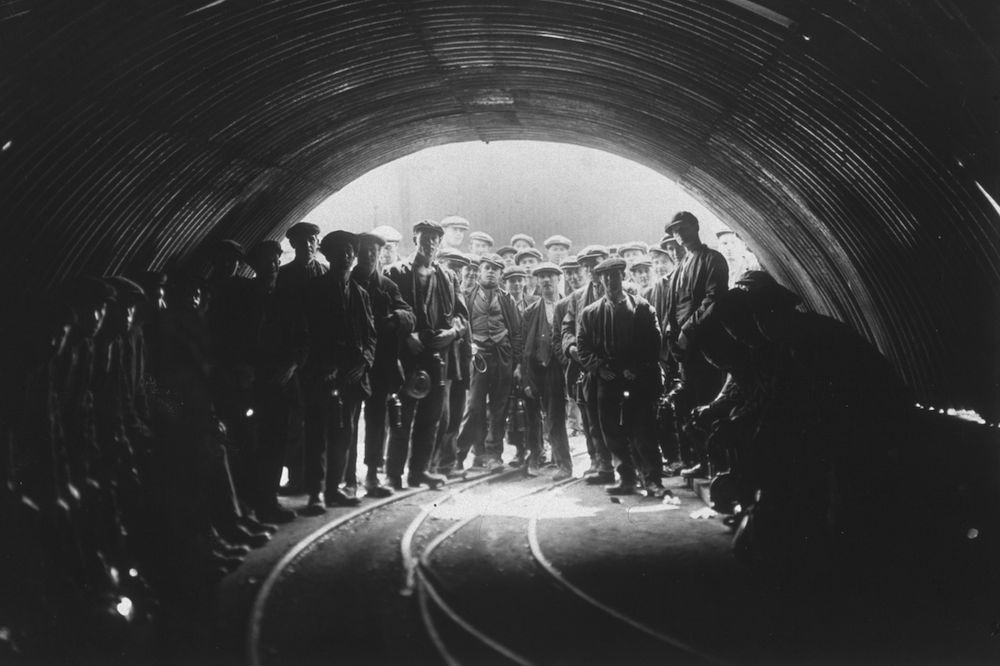
Coal miners standing at the pit head of Tilmanstone colliery, Kent. The picture was taken using a ‘Sashalite’, a safe photographic flash developed by Sasha himself. (Photo by Sasha/Getty Images)
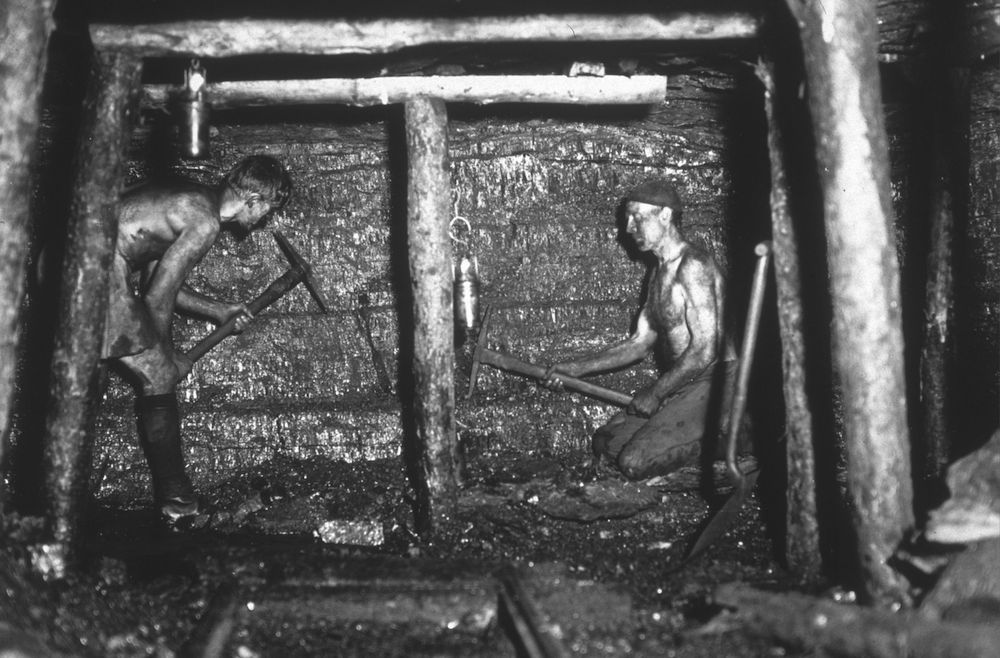
Miners working at the coal face of Tilmanstone colliery, Kent. The photograph was taken using a ‘Sashalite’, one of the first safe photographic flash guns, invented by Sasha himself. (Photo by Sasha/Getty Images)

circa 1934: Miners emrge back into the light from a coal mine on a miniature railway carriage. (Photo by Fox Photos/Getty Images)

18th October 1934: In a Durham coal mine a deputy makes out his report at the ‘kist’ or station after inspecting the coal face to see all is safe before a shift starts. A miner’s lamp is beside him. (Photo by David Savill/Topical Press Agency/Getty Images)
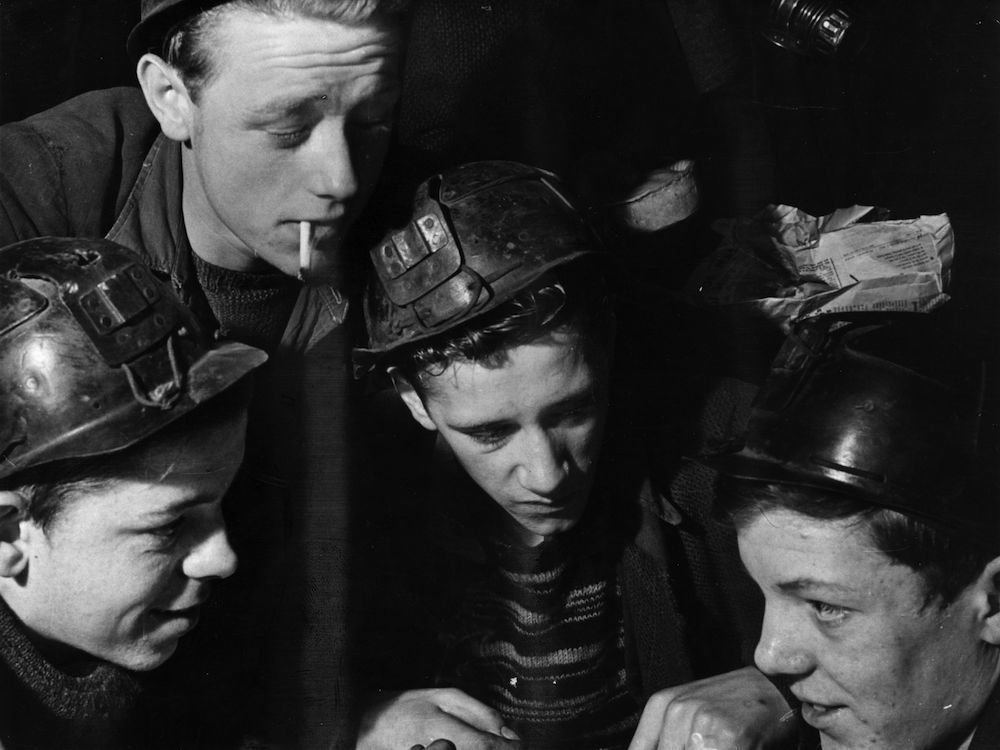
circa 1935: Coal miners in safety helmets at Ashington Colliery, in Northumberland. (Photo by Fox Photos/Getty Images)

November 1935: Tom Williams, MP for Don Valley, fills up the first car with petrol from British coal at a service station in London. Williams represents the Doncaster miners, who hew the coal from which the petrol is distilled. It is produced by the coalite carbonisation process. (Photo by E. Dean/Topical Press Agency/Getty Images)
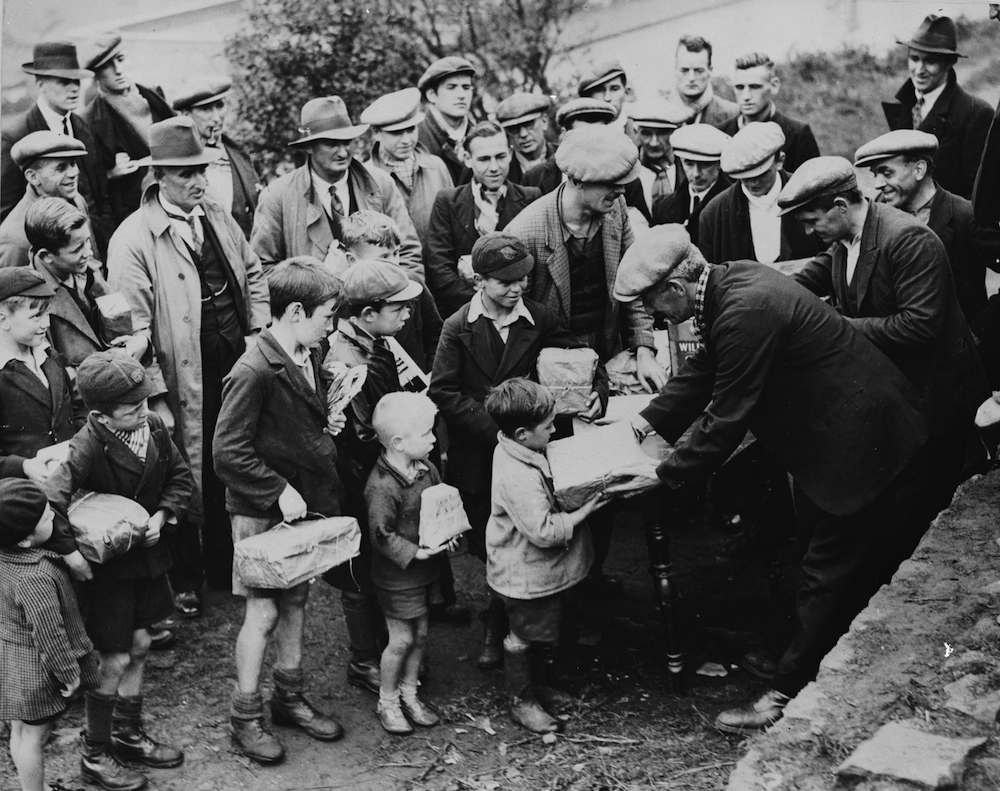
October 1935: Children bring food parcels to miners on strike below ground at the Taff Merthyr colliery in Wales. (Photo by Fox Photos/Getty Images)

28th April 1936: A miner pushing a coal truck at the Old Meadows coal pit, Bacup, Lancashire. (Photo by Fox Photos/Getty Images)
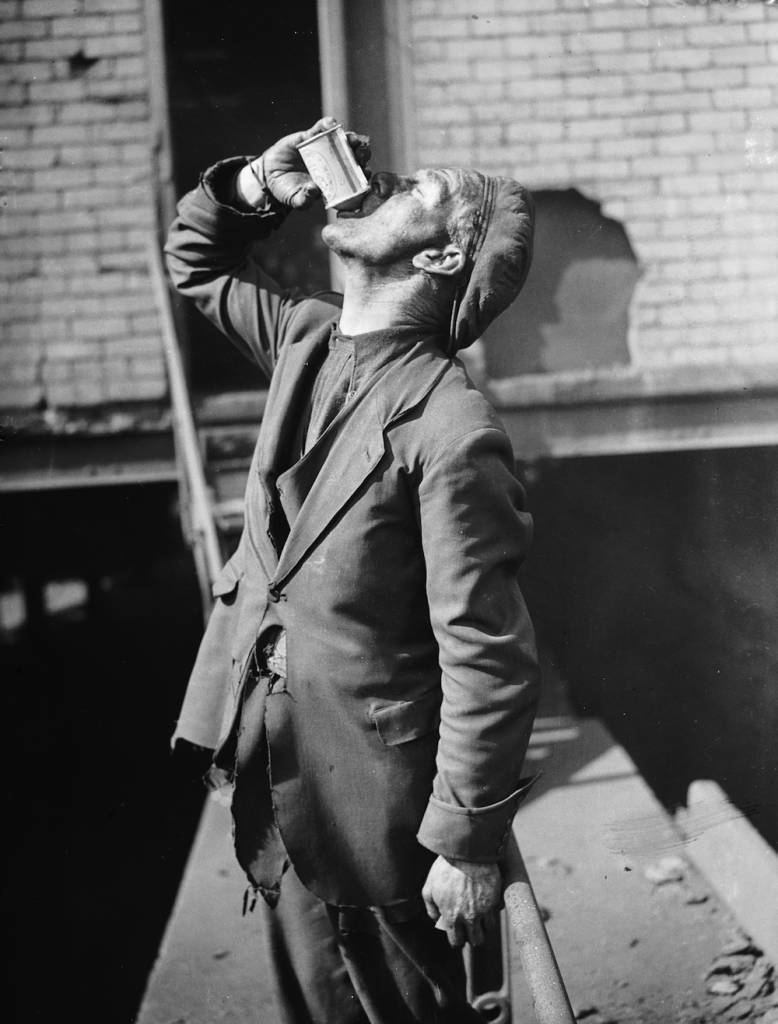
17th April 1936: A miner at Rose Heyworth colliery in South Wales drinking a can of beer to celebrate the wedding of R D Firth, the son of the mine owner, Sir William Firth. (Photo by Richards/Fox Photos/Getty Images)
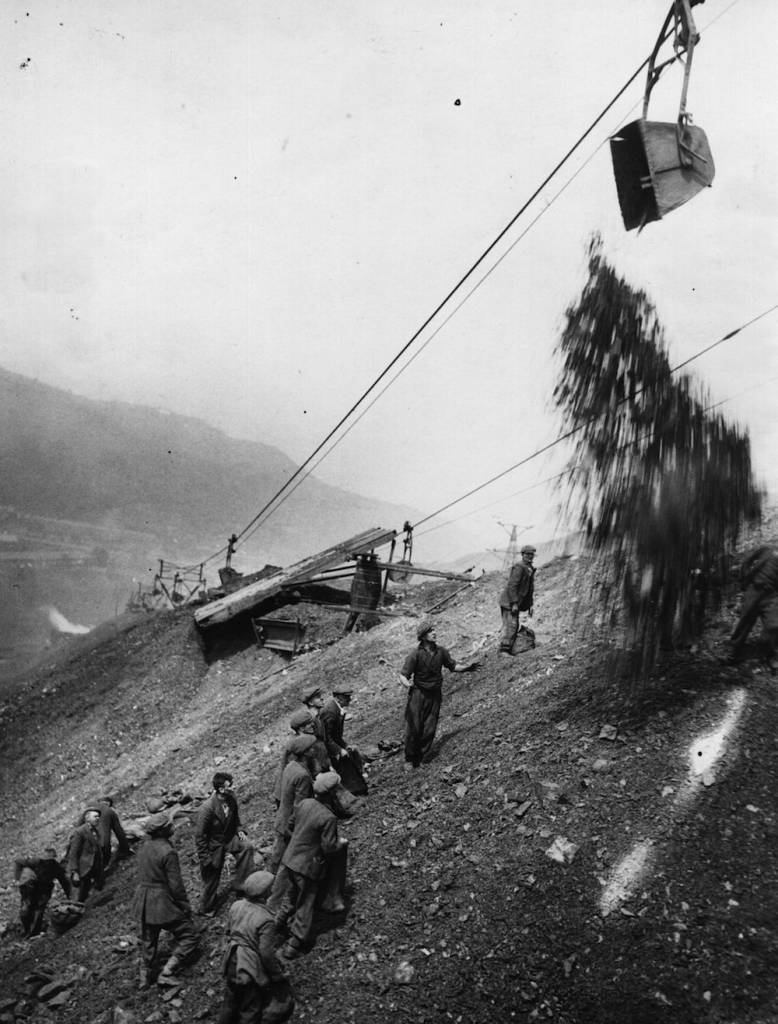
22nd May 1936: Members of the unemployed are allowed to gather free coal from the tip at Cylfynydd near Pontypridd, though it is definitely a case of first come first served as a lot of what is dropped is dust. (Photo by Fox Photos/Getty Images)

11th October 1938: Miners, straight from the pit, taking their milk break in the sunshine at a new milk bar opened at Penallfe colliery. (Photo by Fox Photos/Getty Images)
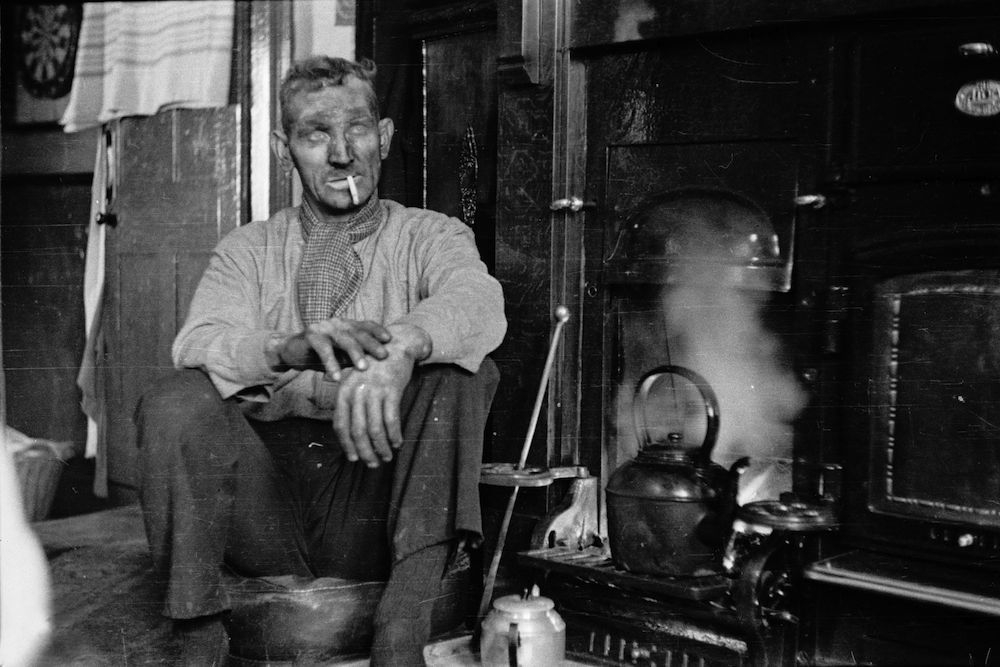
18th February 1939: British coal miner Tommy Shotton relaxing with a cigarette after work. (Picture Post – Coal Miner – pub. 1939) (Photo by Topical Press Agency/Getty Images)
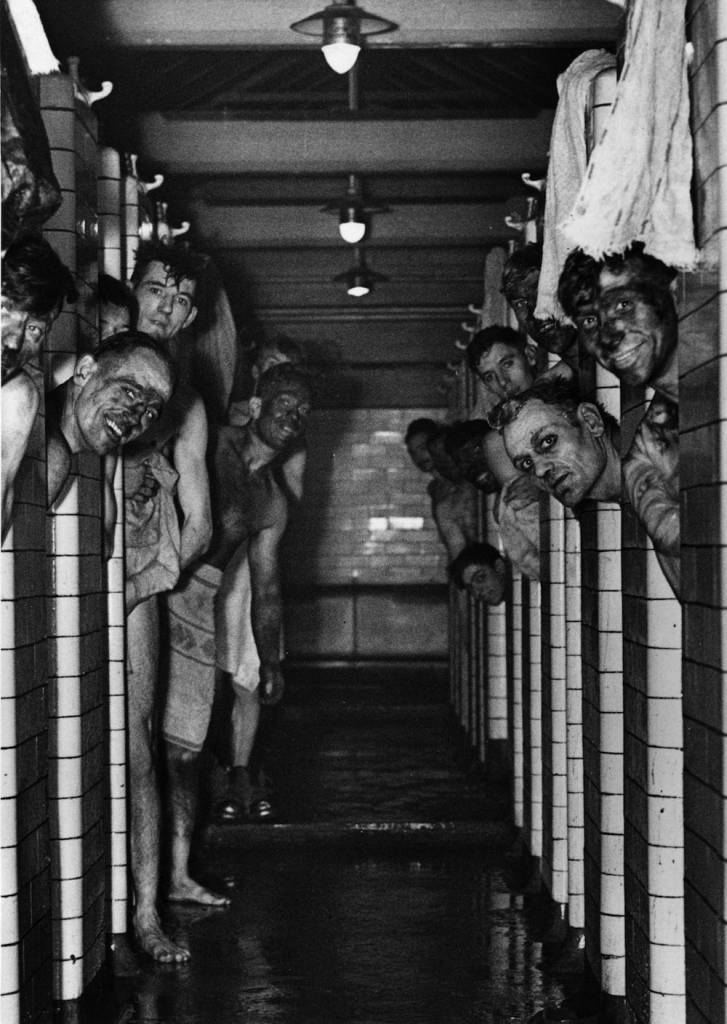
circa 1940: Miners taking a shower following a shift down the coal pit. (Photo by Fox Photos/Getty Images)
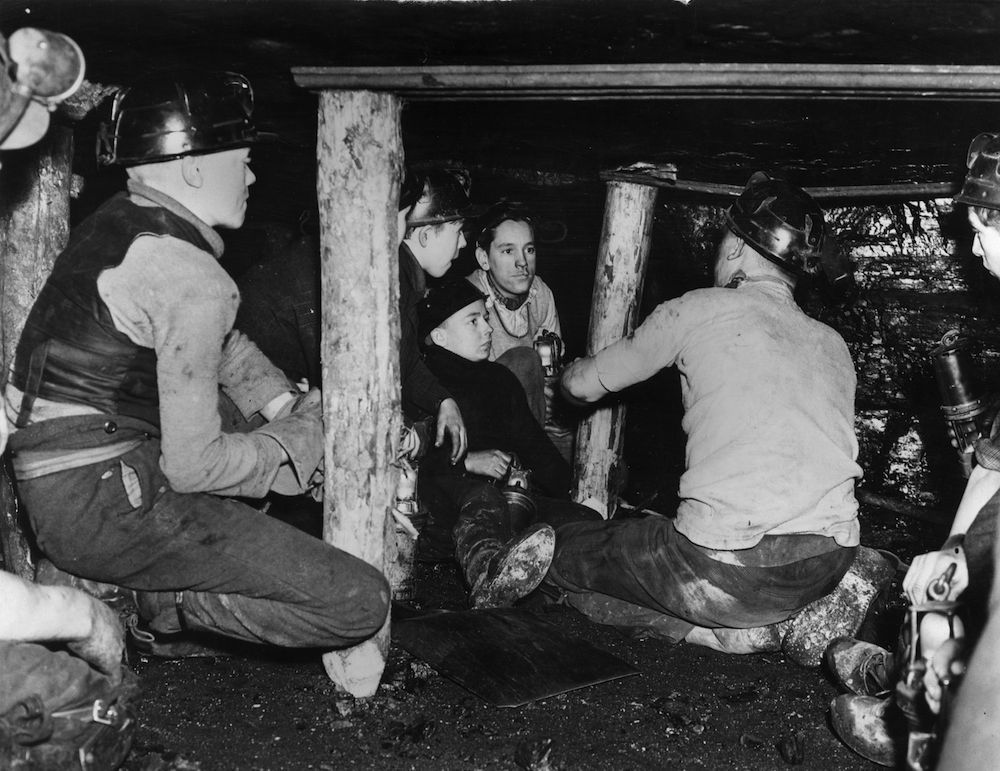
7th November 1939: Young school leavers are given instruction in the essentials of coal mining. Youngsters such as these are much needed by the industry to replace the men that have joined up to fight in the war. (Photo by Fox Photos/Getty Images)
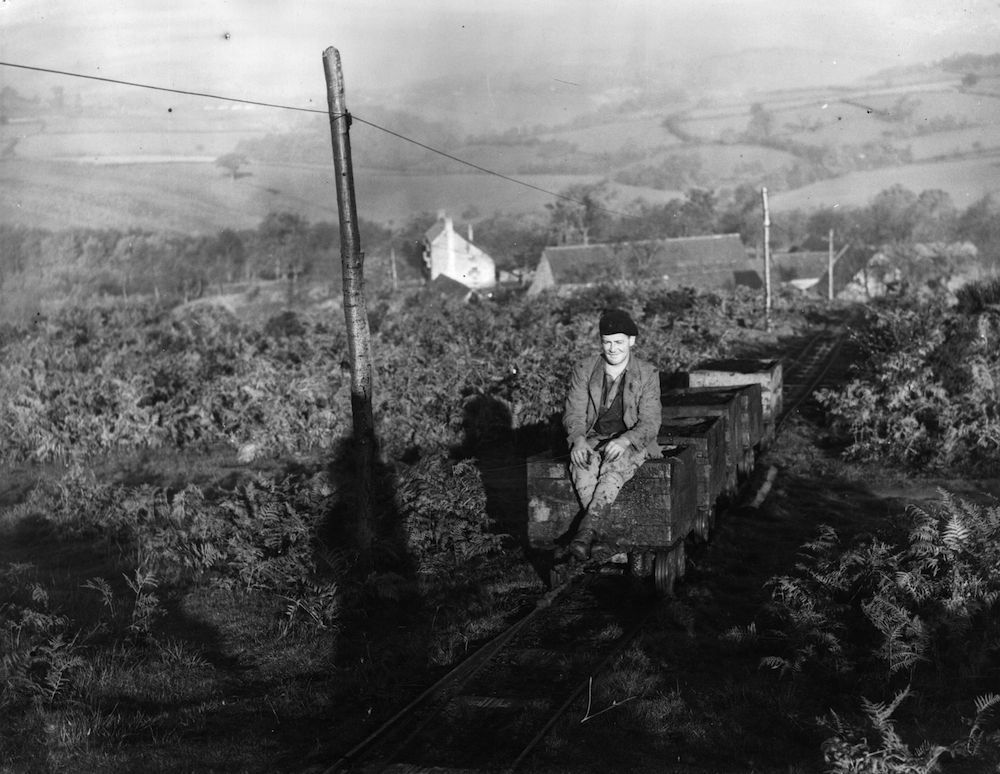
18th November 1941: A ‘Freeminer’ hitches a ride on a coal rail truck through the bracken and trees to the road. A ‘Freeminer’ is the term given to those who have the right to mine for coal in some of the small mines in the Forest of Dean. Every ounce of coal that can be mined is vital to the war effort. (Photo by Maeers/Fox Photos/Getty Images)
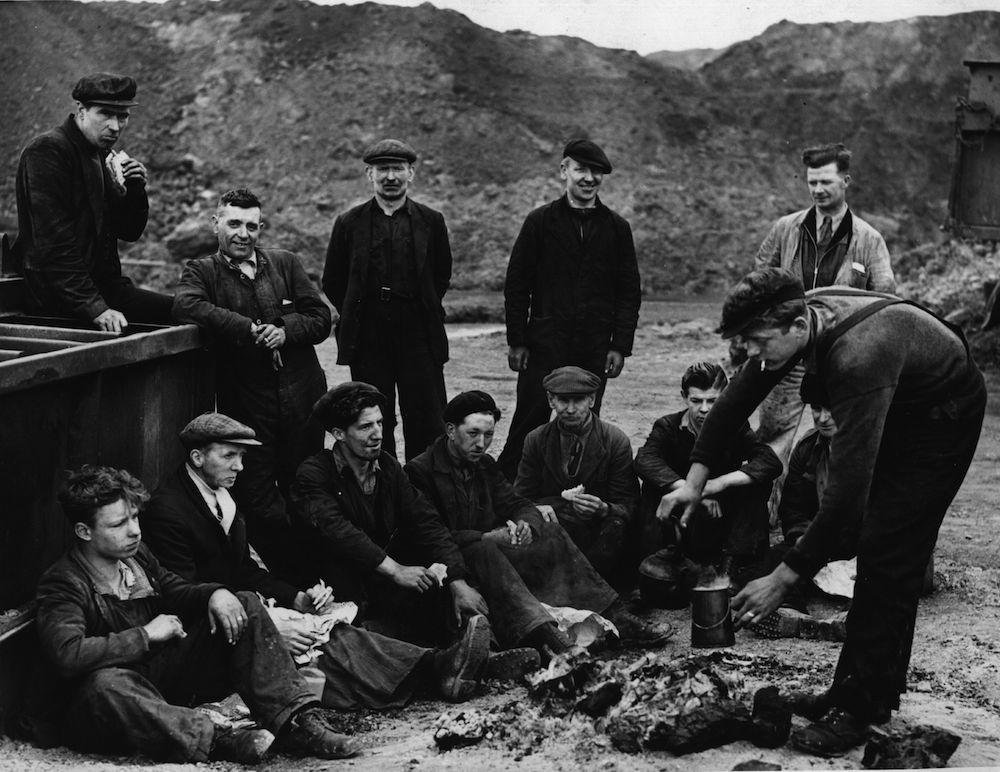
April 1942: Warwickshire coal miners stop for a tea break above ground. (Photo by Fox Photos/Getty Images)
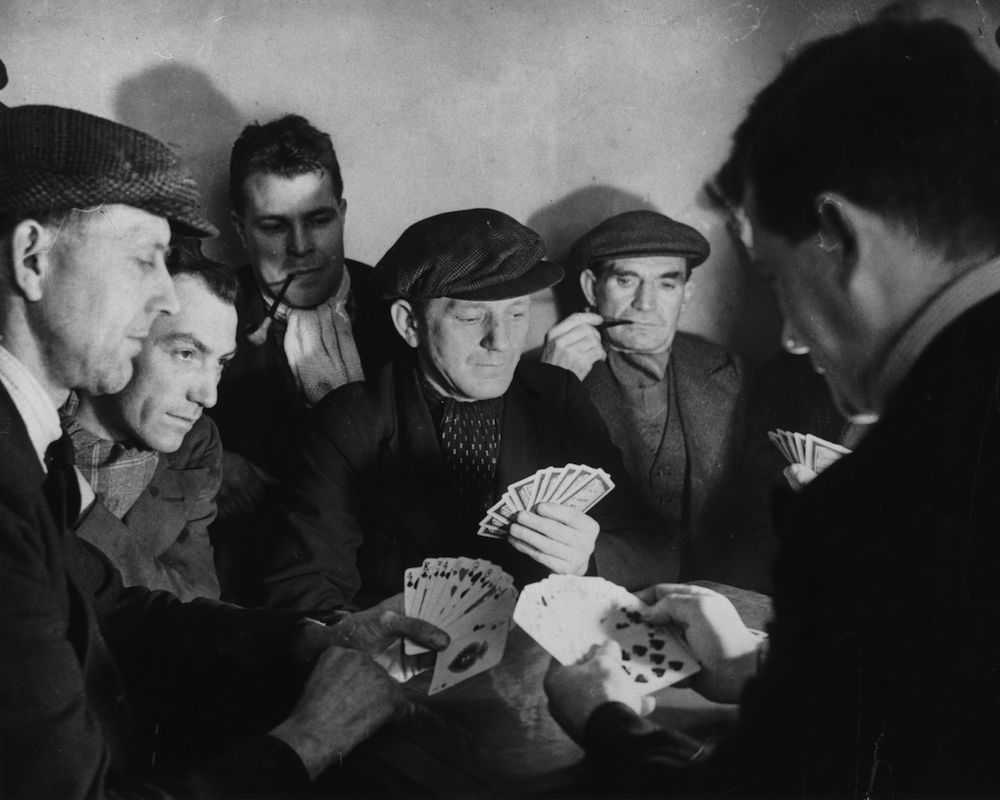
circa 1950: Some of the 1,000 men who have been on strike from the Nottinghamshire colliery of Haworth for nine weeks, playing a game of cards to while away the time. (Photo by Keystone/Getty Images)
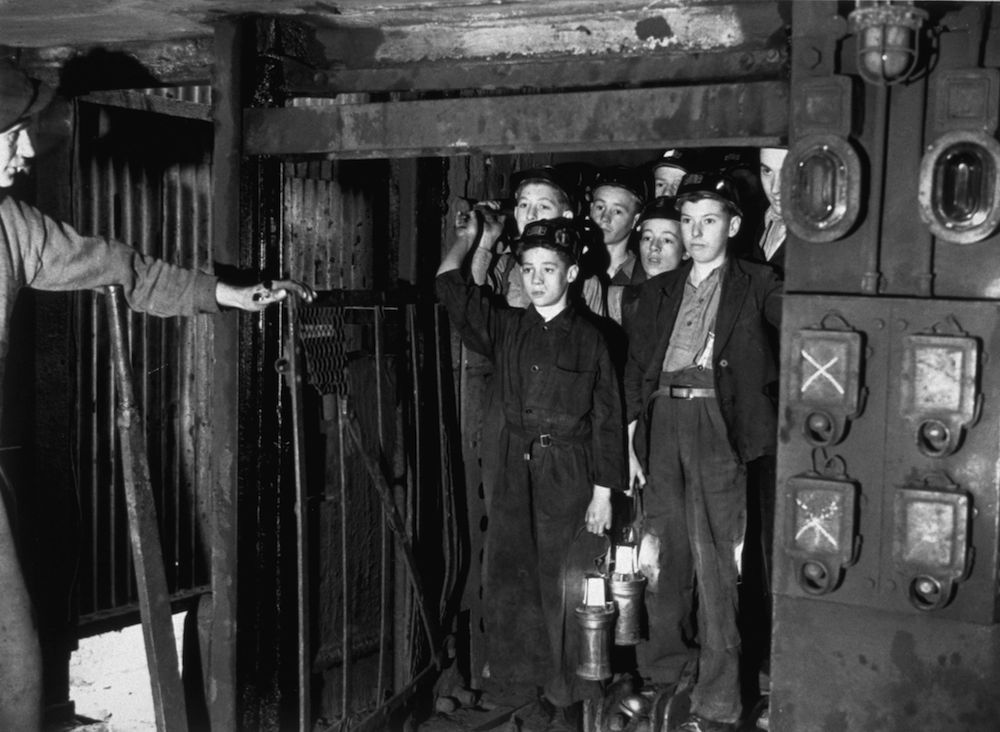
September 1943: A number of boys volunteered for the coal mines following a Government appeal, and started their training at Markham Main Colliery, near Doncaster. (Photo by Keystone/Getty Images)
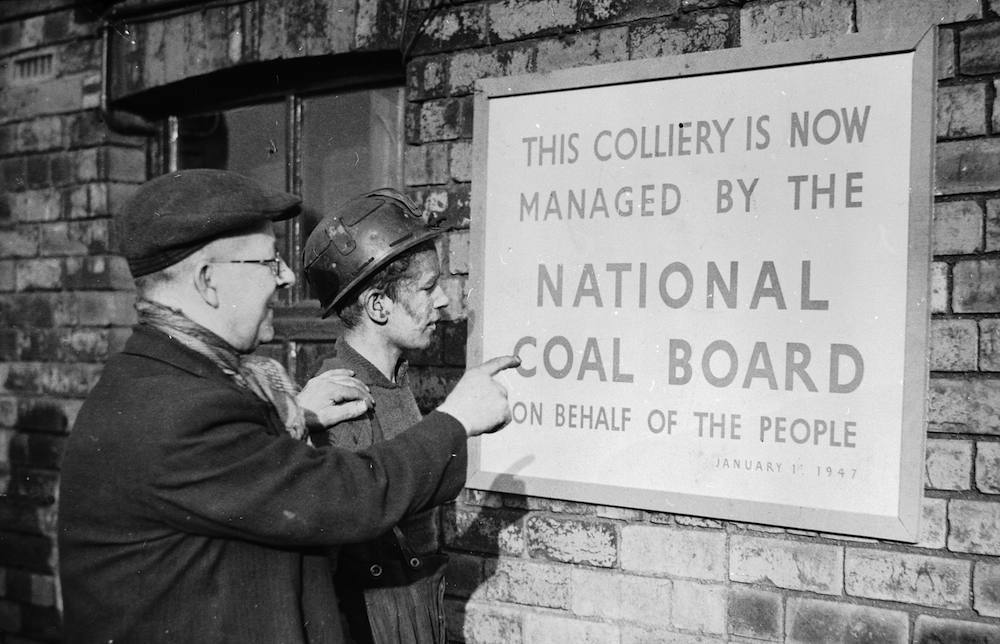
2nd January 1947: Two miners reading a notice announcing that their colliery is.. ‘Now managed by the National Coal Board on behalf of the People’. (Photo by Keystone/Getty Images)
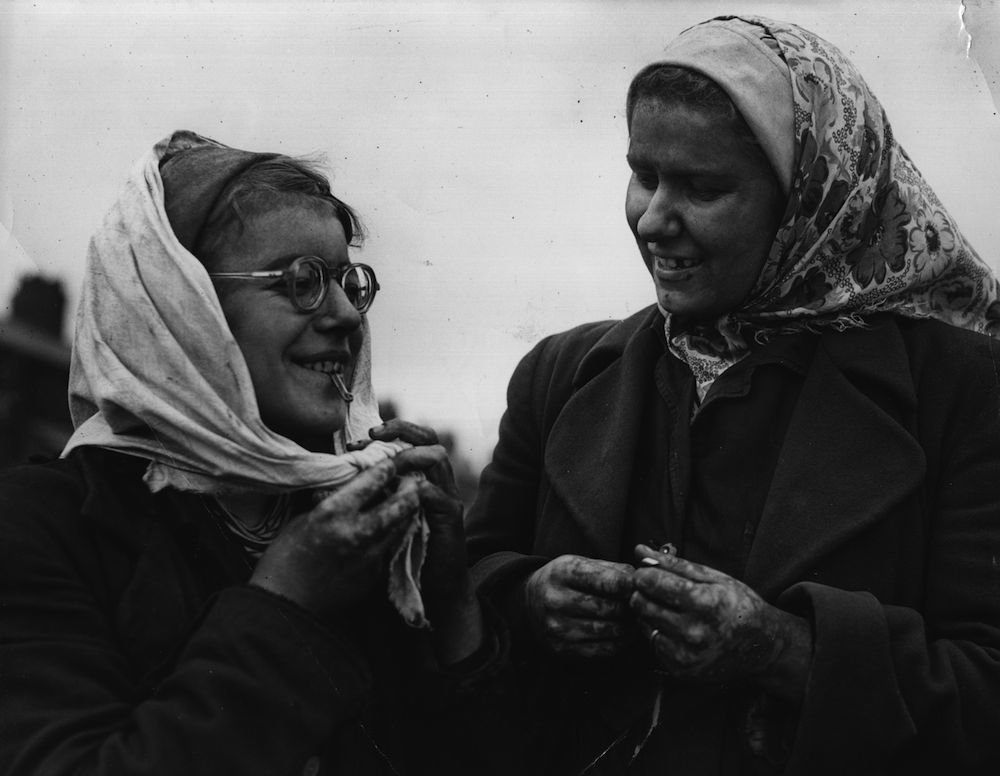
9th August 1954: A couple of ‘pit brow lassies’ employed at Bickershaw Colliery, Manchester, dirty from cleaning coal all day. (Photo by Norman Vigars/Fox Photos/Getty Images)

Prince Philip (left), the Duke of Edinburgh, is escorted by H Aspinall, the manager of Pits 1 and 2 at Mosley Common, as they meet a party of miners at the colliery, Manchester, April 4th 1952. (Photo by J. Hardman/Fox Photos/Getty Images)
Would you like to support Flashbak?
Please consider making a donation to our site. We don't want to rely on ads to bring you the best of visual culture. You can also support us by signing up to our Mailing List. And you can also follow us on Facebook, Instagram and Twitter. For great art and culture delivered to your door, visit our shop.
